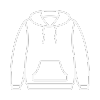All About Constrction Safety Vest And 7 Tips For Choosing
Construction safety vests, also known as hi-vis vests, are essential garments designed to enhance worker visibility on construction sites, reducing the risk of accidents and injuries. These vests help workers remain visible to other workers, vehicles, and machinery, especially in low-light conditions or when working near traffic.
But with so many options available, what makes a safety vest truly effective? How do factors like reflectivity, material, and the vest’s class affect safety on the job site?
In this guidem we will explore these questions in-depth, covering 6 tips for choosing like understand the work environment and risk level, look for high-quality reflective strips, ensure proper fit and comfort, choose durable and breathable materials, select the right class of vest for your needs, consider additional features for enhanced functionality, as well as key considerations like the different classes of safety vests (Class 1, 2, and 3), the importance of reflectivity, and other features to look for when choosing the right vest for a construction environment.
Why Are Construction Safety Vests So Important?
Construction safety vests, are a crucial element in ensuring worker safety on construction sites. The primary role of these vests is to significantly enhance a worker’s visibility, making them easily seen by operators of heavy machinery, vehicles, and other workers, especially in low-light conditions or when working near traffic.
Studies have shown that wearing a hi-vis vest can reduce the risk of accidents by up to 55%, particularly by lowering the likelihood of workers being struck by vehicles. This increased visibility is not just about avoiding collisions; it’s also about alerting workers to potential hazards and ensuring they are easily identifiable in busy, fast-paced environments. In addition to improving visibility, high-visibility vests offer peace of mind, knowing that workers are more likely to be seen and avoid potentially life-threatening accidents.
6 Tips For Choosing A Construction Safety Vest
Choosing the right construction safety vest is a critical factor in ensuring worker safety, visibility, and comfort on the job site. With various types and classes available, selecting the correct vest is key to meeting safety regulations and optimizing performance. Below are six essential tips to help you make an informed decision when choosing the ideal construction safety vest:
1. Understand the Work Environment and Risk Level
The first consideration when choosing a construction safety vest is to assess the risk level of your work environment. For construction sites with high vehicle traffic or low light conditions, a Class 3 safety vest is recommended for maximum visibility. These vests are designed for high-risk settings where workers need to be visible from a distance, such as on highways or in construction zones with fast-moving vehicles. On the other hand, Class 1 vests are more suitable for low-risk environments like parking lots or areas with minimal vehicle activity.
2. Look for High-Quality Reflective Strips
Reflective strips are essential for maximizing visibility in low-light or night-time conditions. Opt for vests equipped with 2-inch wide reflective strips, as they offer superior visibility even under poor weather conditions. Vests featuring multi-directional reflective stripes enhance visibility from various angles, which is particularly beneficial in environments where workers need to be seen from all directions, such as during dusk or foggy conditions.
3. Ensure Proper Fit and Comfort
Comfort and functionality are paramount in choosing a construction safety vest. A vest that fits well allows workers to move freely and reduces the likelihood of discomfort during long hours on the job. Ensure the vest fits snugly without being too tight, particularly around the shoulders and chest, to allow easy movement. Adjustable straps and Velcro closures are ideal for a customized fit. A vest that is too loose or too tight can cause discomfort and impact productivity, so it’s important to try it on or refer to size guides for accurate measurements.
4. Choose Durable and Breathable Materials
Construction safety vests must be made of durable, high-quality materials to withstand tough work environments. Look for vests made from polyester or mesh fabrics, which are both lightweight and breathable, allowing workers to stay comfortable even in hot weather. High-denier polyester offers excellent durability against wear and tear, while mesh fabrics improve ventilation, reducing sweating during strenuous tasks. A durable safety vest ensures long-lasting protection and comfort over time, without compromising visibility.
5. Select the Right Class of Vest for Your Needs
Construction safety vests come in three classes, each suited for specific types of environments. Class 1 vests are designed for low-traffic areas, providing basic visibility for environments with minimal hazards. Class 2 vests, on the other hand, are suitable for medium-risk settings such as roadways with moderate traffic. These vests offer more reflective coverage and are ideal for workers in environments like parking lots, warehouses, or work zones near traffic. For high-speed environments like highways or busy construction sites, Class 3 vests are mandatory. These provide the highest level of visibility with extensive reflective material coverage, suitable for high-risk, high-traffic areas.
About The Different Classes Of Construction Safety Vests
Construction safety vests come in three primary classes, each designed for different levels of risk and visibility requirements. Understanding these classes is essential for selecting the appropriate vest based on the work environment.
| Class | Risk Level | Environment | Reflectivity & Coverage | Material & Design | Common Use |
| Class 1 | Low-risk | Parking lots, roadways with minimal vehicle traffic, warehouse areas, off-road construction zones | Reflective strips (minimum 2-inch width) placed on the vest, minimal coverage (typically limited to shoulders) | Lightweight fabric, usually polyester or mesh, basic design | Suitable for environments with low pedestrian or vehicle traffic, non-highway work areas |
| Class 2 | Medium-risk | Roadways with moderate traffic, intersections, airport runways, or parking lots with high vehicle traffic | Reflective bands (minimum 2-inch width) covering torso and shoulders, high visibility color panels (yellow or orange) | Durable material such as polyester or mesh, designed for comfort and breathability | Works best in areas with more vehicles or when workers are near moving traffic or machinery |
| Class 3 | High-risk | Highways, fast-moving construction zones, emergency response, areas with high-speed vehicle traffic | Full-body reflective coverage, including torso, arms, and shoulders, reflective strips forming a “X” on the back, high visibility color (usually fluorescent yellow-green or orange) | Heavy-duty materials, more robust construction, designed to withstand extreme conditions and high visibility requirements | For environments with fast-moving vehicles, heavy traffic, or high-risk areas where worker safety is critical |
Additional Benefits Of Wearing A Construction Safety Vest
Construction safety vests are essential for worker safety, but their benefits extend beyond just visibility. In addition to protecting workers on the job, safety vests offer numerous advantages that contribute to a safer, more compliant, and long-lasting work environment. Here are some key benefits of wearing a construction safety vest:
1. Legal Compliance
Wearing safety vests ensures compliance with OSHA regulations, which mandate high-visibility clothing in certain work environments to reduce the risk of accidents. This not only promotes safety but also helps companies avoid potential legal penalties.
2. Enhanced Worker Comfort
A well-designed construction safety vest can greatly improve worker comfort, especially during long hours on the job. Many vests are made from lightweight, breathable materials, offering better airflow and reducing heat buildup, which is crucial for workers in hot environments.
3. Long-Term Durability
Quality construction safety vests are built to last. Made from robust materials, they stand up to the demands of the job, providing reliable protection and comfort over time. Choosing a durable vest reduces the need for frequent replacements, offering both safety and cost-effectiveness.
6th Gear’s Range Of Functional Outerwear
6th Gear offers a variety of outerwear designed to cater to different needs. The collection includes leather vests, which provide durability and protection, summer breathable vests, ideal for warmer weather, and safety vests that enhance visibility in work environments. Each product is crafted to ensure comfort and performance, with materials chosen to suit various conditions and purposes. From stylish leather vests to high-visibility safety vests, 6th Gear provides a range of options for those looking for functional and reliable outerwear.
Bottom Line
In conclusion, choosing the right construction safety vest is crucial for ensuring the safety, comfort, and visibility of workers on construction sites. With the variety of options available, from different classes of vests to various features like reflective strips and breathable materials, it is essential to select the best fit for the work environment.
By making an informed choice, workers and employers can mitigate risks, improve compliance with regulations, and ensure long-term durability and comfort. Whether you’re looking for leather vests for added durability, safety vests for maximum visibility, or breathable summer vests for hot conditions, 6th Gear offers a range of reliable options that cater to your needs, promoting both safety and productivity on the job.
















